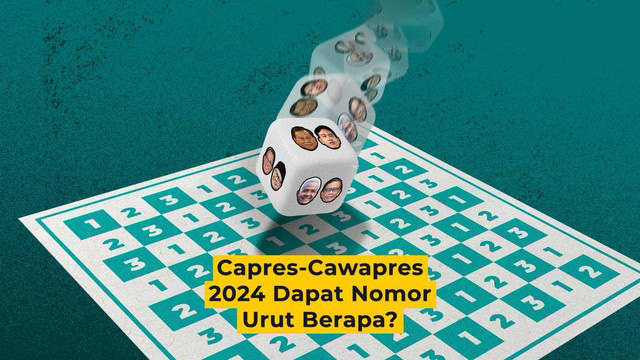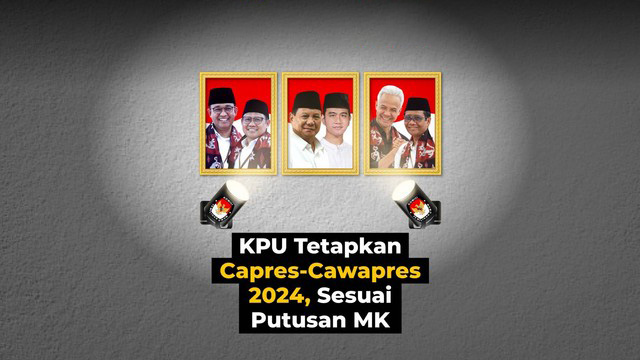Mastering Micro-Targeted Campaigns: Deep Technical Strategies for Precise Engagement #2
Implementing micro-targeted campaigns involves navigating complex data ecosystems, sophisticated segmentation techniques, and multi-channel execution strategies. This article delves into the technical intricacies and actionable methodologies that enable marketers to craft hyper-personalized experiences that truly resonate with niche audiences. We will explore step-by-step processes, advanced tools, potential pitfalls, and real-world case examples to elevate your micro-targeting game beyond basic practices. For a broader understanding, refer to our comprehensive guide on micro-targeting.
1. Selecting and Segmenting Micro-Audience Data for Precise Campaign Targeting
a) Identifying Key Data Sources for Micro-Targeting
Effective micro-targeting hinges on integrating multiple high-quality data streams. Primary sources include Customer Relationship Management (CRM) systems, behavioral analytics platforms, and social media insights. To ensure seamless data flow:
- CRM Data: Export detailed customer profiles, purchase histories, preferences, and lifecycle stage data. Use APIs or direct database queries to extract structured data regularly.
- Behavioral Analytics: Deploy tools like Mixpanel, Amplitude, or Pendo to track real-time user interactions on your website or app. Focus on page views, clickstreams, time spent, and conversion paths.
- Social Media Insights: Use platform-specific APIs (Facebook Graph API, Twitter API) or social listening tools (Brandwatch, Sprout Social) to gather engagement patterns, sentiment, and demographic info.
Expert Tip: Consolidate these data streams into a centralized Customer Data Platform (CDP) to unify profiles and enable real-time insights, setting the foundation for precise segmentation.
b) Techniques for Segmenting Audience Based on Psychographics, Purchase History, and Engagement Patterns
Moving beyond basic demographics requires multi-dimensional segmentation:
- Psychographic Clustering: Use psychographic data (values, interests, lifestyles) extracted from surveys, social media behavior, or third-party datasets. Apply clustering algorithms (e.g., K-Means, Hierarchical Clustering) to identify distinct groups.
- Purchase Behavior Segmentation: Segment customers by recency, frequency, and monetary value (RFM analysis). For example, isolate high-value, engaged customers for loyalty campaigns.
- Engagement Pattern Analysis: Identify behaviors like content consumption, response times, or channel preferences. Use time-series analysis and machine learning classifiers to detect patterns predictive of future actions.
Pro Tip: Automate segmentation updates with scheduled data pipelines using tools like Apache Airflow or Prefect, ensuring your audience profiles reflect real-time shifts.
c) Building Dynamic Audience Profiles Using Real-Time Data Updates
Dynamic profiles are essential for responsive micro-targeting. Implementation steps include:
- Establish Data Pipelines: Use streaming platforms like Apache Kafka or AWS Kinesis to ingest real-time data from web/app events, CRM updates, and social media.
- Data Storage & Processing: Store streaming data in low-latency databases such as Redis or DynamoDB, coupled with processing frameworks like Apache Flink or Spark Structured Streaming.
- Profile Updating: Develop microservices that listen to event streams and update user profiles continuously, tagging behaviors, preferences, and engagement scores.
Actionable Step: Implement a real-time scoring model to dynamically assign engagement scores, enabling instant segmentation adjustments.
d) Case Study: Segmenting a Local Retail Customer Base for Personalized Promotions
A regional grocery chain leveraged POS data, loyalty app interactions, and social media engagement to create micro-segments such as “Weekend Shoppers,” “Health-Conscious Buyers,” and “Price-Sensitive Customers.” Using real-time data pipelines, they dynamically adjusted promotional offers:
| Segment Name | Key Data Inputs | Targeted Action |
|---|---|---|
| Weekend Shoppers | POS purchase timestamps, loyalty app check-ins | Exclusive weekend discounts pushed via SMS and app notifications |
| Health-Conscious Buyers | Product searches, social media mentions of health topics | Personalized emails with health-focused product bundles |
| Price-Sensitive Customers | Coupon redemptions, browsing history | Targeted coupons sent during peak shopping hours |
2. Crafting Highly Personalized Content for Micro-Targeted Campaigns
a) Developing Customized Messaging Based on Segment-Specific Preferences
Once segments are identified, tailor messages by:
- Mapping Segment Insights: Use survey data, purchase triggers, and engagement history to understand what resonates.
- Crafting Persona-Based Templates: Develop flexible email templates with placeholders for dynamic content, such as product recommendations, location-specific offers, or preferred communication channels.
- Using Conditional Logic: Implement logic within your content management system (CMS) or email platform to display different messages based on segment attributes.
Deep Insight: Personalization isn’t just inserting a name; it’s aligning your message’s value proposition precisely with what each micro-segment cares about—be it health, savings, or convenience.
b) Using Conditional Content Blocks and Dynamic Personalization Tools
Implement advanced personalization with:
- Dynamic Content Blocks: Platforms like Salesforce Marketing Cloud, HubSpot, or Braze enable conditional rendering of content blocks. For example, show vegan product recommendations only to health-conscious segments.
- Personalization Tokens: Use tokens such as {{first_name}}, {{last_purchase_category}}, or {{location}} to inject real-time data into messages.
- API Integrations: Connect your content platform with your CDP via APIs to fetch personalized data points on-the-fly during message rendering.
Tip: Test conditional content rigorously with preview and test send features to verify correct rendering across all segments before deployment.
c) Implementing A/B Testing for Micro-Variations in Messaging
Optimize your personalization by:
- Designing Micro-Variants: Create variations in headlines, call-to-actions (CTAs), imagery, or personalized offers tailored to specific segments.
- Running Controlled Experiments: Use A/B split testing within your platform, ensuring statistically significant sample sizes for each variation.
- Analyzing Results: Focus on engagement metrics like click-through rates (CTR), conversion rates, and time on message per segment to identify the most effective variants.
Advanced Tip: Use multi-variable testing (multivariate testing) for complex message components, enabling you to discover optimal combinations for each micro-segment.
d) Example Workflow: Creating Personalized Email Sequences for Different Customer Personas
To execute this effectively:
- Define Personas: Segment customers into personas such as “Eco-Friendly Enthusiast,” “Frequent Buyer,” “First-Time Visitor.”
- Map Content Paths: Develop email sequences tailored to each persona, incorporating dynamic content modules that adapt based on behavior (e.g., abandoned cart, recent browsing).
- Set Triggers and Timing: Use automation workflows to send the first email immediately after a trigger, followed by sequenced messages based on engagement or inactivity.
- Implement Personalization Tokens and Conditions: Insert personalized offers, product images, and messaging conditioned on the data collected, ensuring each recipient perceives the message as uniquely relevant.
- Monitor and Optimize: Track open rates, CTR, and conversion metrics per persona and refine the workflows iteratively.
3. Executing Multi-Channel Micro-Targeted Campaigns with Precise Timing
a) Coordinating Cross-Platform Delivery (Email, SMS, Social Ads) for Cohesive Experiences
Achieving seamless multi-channel delivery requires:
- Unified Customer Identifiers: Use persistent IDs (email, phone number, social handles) linked across platforms for synchronized targeting.
- Cross-Channel Orchestration Platforms: Leverage tools like Salesforce Marketing Cloud, Adobe Campaign, or Braze that support multi-channel workflows with centralized control.
- Consistent Messaging & Timing: Ensure that the core message, offer, and creative elements are aligned, with coordinated scheduling to reinforce the campaign.
Implementation Tip: Use a customer journey mapping tool to visualize touchpoints and identify optimal moments for cross-channel engagement.
b) Leveraging Behavior Triggers to Automate Timely Outreach
Set up trigger-based automations by:
- Event Detection: Monitor specific actions such as cart abandonment, product page visits, or recent app activity using event listeners integrated with your marketing platform.
- Automation Rules: Define rules like “Send abandoned cart email 30 minutes after inactivity,” or “Push SMS alert when a high-value product is viewed.”
- Personalized Content: Dynamically generate messages that reference the exact product or action, increasing relevance.
Pro Tip: Use delay and frequency capping controls to prevent over-communication and fatigue, maintaining a positive brand impression.
c) Optimizing Send Times Based on User Activity Patterns
To maximize open and engagement rates:
- Collect Activity Data: Track when users are most active via web logs, app analytics, and email engagement data.
- Apply Time Zone and Personalization: Use geo-IP data and user preferences to schedule messages at local optimal times.
- Use Machine Learning Models: Build models that predict individual user activity windows, utilizing algorithms like gradient boosting or recurrent neural networks trained on historical data.
Key Insight: Automate dynamic send times per recipient to outperform static scheduling, significantly boosting engagement.
d) Practical Steps: Setting Up Automated Workflows in Marketing Automation Platforms
Implementing automation requires:
- Define Objectives & Triggers: Clearly specify what actions initiate workflows (e.g., new sign-up, purchase, inactivity).
- Create Workflow Maps: Use visual editors within platforms like HubSpot, ActiveCampaign, or Marketo to design multi-step sequences.
- Set Personalization & Timing: Insert dynamic tokens and configure timing rules based on user activity and preferences.
- Test & Refine: Run test workflows, analyze performance metrics, and iterate to improve relevance and timing.


















